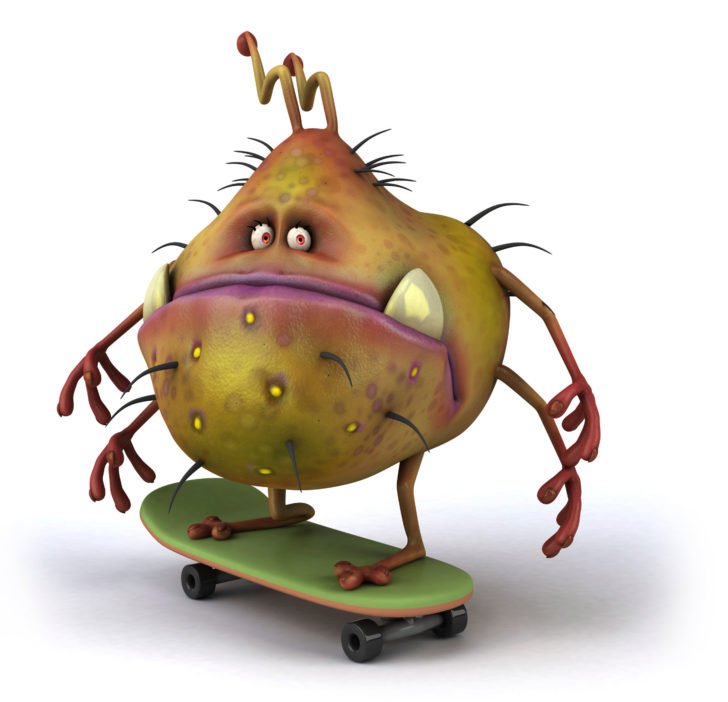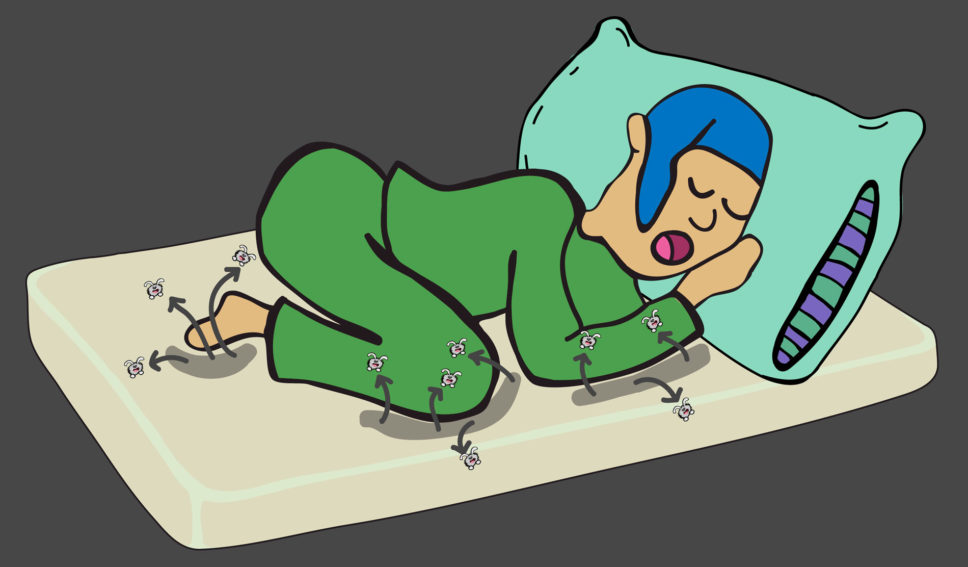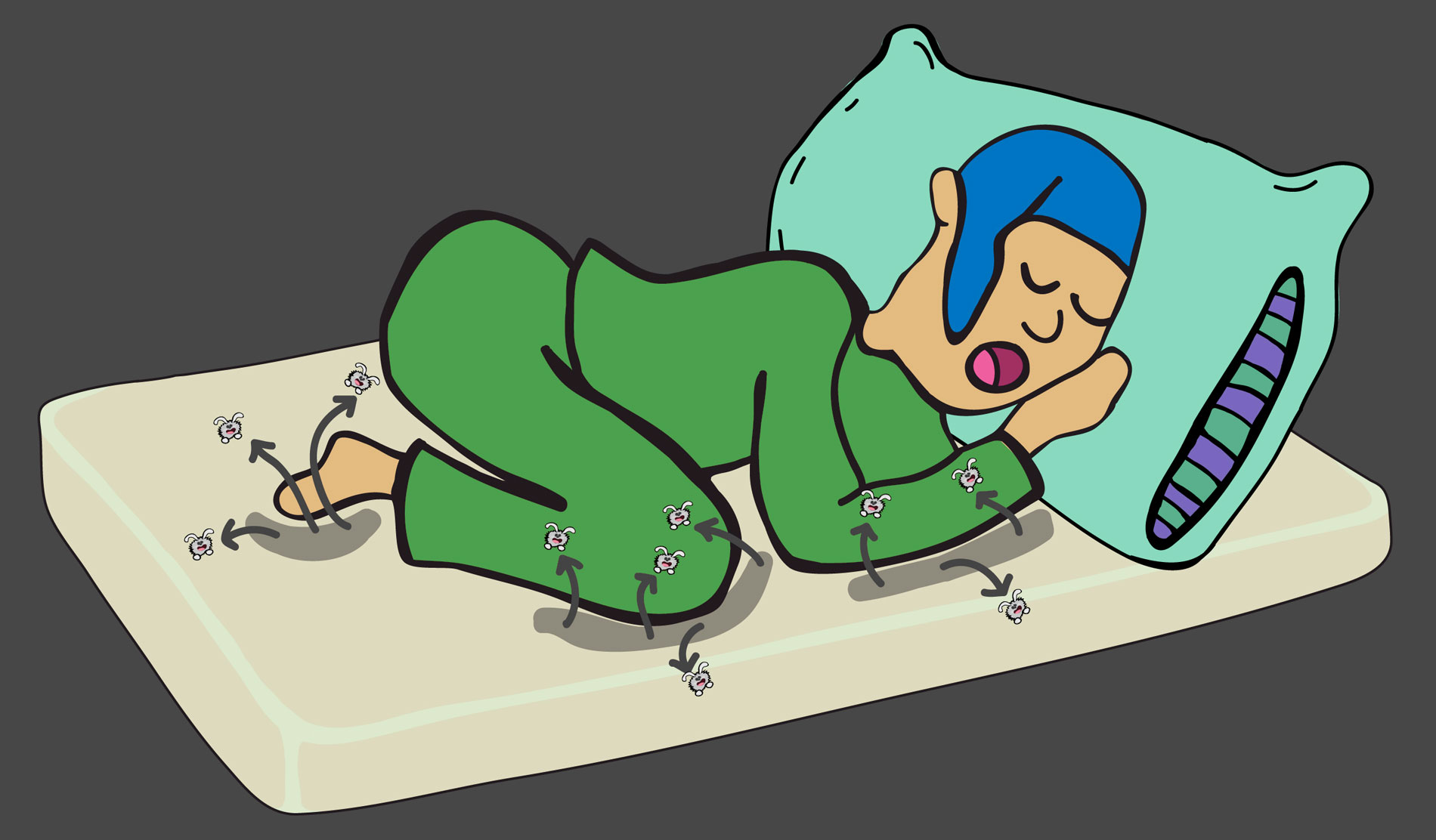Don’t be fooled by their microscopic size. While the average dust mite measures between 0.2 and 0.3 millimeters in length, they pack a surprisingly powerful punch.
Assumed by environmental researchers to be one of the most common allergenic components of house dust, dust mites contain serious allergens capable of causing moderate to severe allergic reactions. Dust mite allergens can cause wheezing and shortness of breath year-round, and have been linked to the development of asthma in young children.
What makes dust in the house
But let’s back up. What makes dust in the house in the first place? The answer is less simple than you might think. Understanding the creators responsible for the dust in your home is a necessary first step to dust prevention, yet it can be akin to finding a needle in a haystack.
Whether it’s developing from the dead skin cells of your toddler, or the dander from your furry, four-legged friend, every living being in your home creates dust on a daily basis. And every nonliving thing in your home, like the fabric of your favorite cozy blanket or comfy loveseat, create dust particles as they age.
Even baking a batch of cookies every so often, cooking up your favorite recipe for lasagna or simply using basic paper products like paper towels and toilet paper can contribute to the growth of dust molecules in the home.
Dust mite allergies natural remedies
While eliminating dust mite population from your home seems like the obvious next step, that is easier said than done. Dust mites thrive in warm, moist environments and feed on dander. As a result, the pesky microscopic minions are drawn to most of the same places you enjoy, like your beds, sofas and nearby carpeted areas.
That is among the reasons why researchers have found that one of every three people living in developed countries suffers from one or more atopic diseases, where a person tends to be prone to having allergies. Among the most common of these are allergic rhinitis (hay fever), asthma and atopic dermatitis (eczema).
Treatment for these relatively common health issues generally happens one of two ways: by treating the person and/or by correcting the environment by finding ways to reduce dust in the home. Opinions on the best way to get rid of dust are varied and widespread, but have evolved scientifically in recent years.
One method that integrates both treatments into one course of action is the use of probiotics.
Research conducted by the North American Journal of Medical Sciences took each of these things into consideration in its study of the effect of natural remedies like probiotics on suffers of hay fever. The researchers referenced data from published, randomized double-blind, placebo-controlled trials that demonstrated that probiotics had a treatment effect on allergic rhinitis.
In addition, the use of probiotics reduced the symptoms in children and adults with hay fever by reducing their response to the dust mites responsible for their suffering.
While the use of natural remedies like probiotics to treat atopic diseases was a fairly new concept a few years ago, it continues to grow in both scope and reach.
Though the benefit of probiotics depends greatly on a number of other factors, the approach has been recognized by scientists as an effective, natural and environmentally friendly way to deal with a problem 30 percent of people struggle with throughout the year.
-

-
How to get rid of dust in your home
To some extent, finding ways to get rid of dust in your home is as simple as adopting regular, thorough cleaning habits. There are plenty of how-to guides out there to help reduce dust in your living space, but here is a quick rundown we compiled with the help of Wikihow:
- Use the right supplies. Not all surfaces are created equal, so keep that in mind as you’re dusting. It’s not a bad idea to utilize different tools for different tasks. For example, consider using a duster for hard to reach places, but a cloth for surfaces that are more readily accessible.
- Do your laundry. Integrate a special load of laundry each week to basics like bedding, blankets, pillows and stuffed animals. These items harbor more dust than most, so regular washing will help eliminate dust.
- Deep clean at least once a month. Clean the vents, scrub behind small appliances and dust behind large appliances like the fridge and stove at least once a month to help reduce dust. Look up, too, remembering to take action to remove dust from ceiling fans and corners of your living space that may go otherwise untended.
- Mind the outside sources. The time you spend in your car and your space at work are not to be forgotten. You will likely track dust from both of those places, so keeping them clean and free of dust will also help reduce dust in the home.
The best way to eliminate dust in the home
Aside from the basics like having a regular cleaning regime, the best way to get rid of dust is ironic since it doesn’t actually eliminate dust in the living room. It doesn’t magically eliminate dust in your couch cushions, get rid of dander or kill dust mites. Instead, a revolutionary concept created by RENUAIRE by Yellowblue puts environmental probiotics to work to create a cleaner, more comfortable living space.
RENUAIRE by Yellowblue provides the world’s first and only probiotic air and surface purification system. Our technology introduces probiotics to replenish indoor spaces with beneficial bacteria. In contrast to conventional air purification and cleaning methods that indiscriminately kill all bacteria, RENUAIRE by Yellowblue continuously releases bacteria that consume organic irritants like pollen, dust mite waste and pet dander.
The patented technology repetitively releases environmental probiotics known as bacillus ferment into the air. Billions of micron-sized probiotics form a layer of microflora, which coats surfaces and creates cleaner air. But don’t be fooled by their micron-sized stature. Environmental probiotics are an effective and powerful way to knock out microscopic minions otherwise known as dust mites.
The best part is RENUAIRE by Yellowblue works nonstop to increase the ratio of good to bad bacteria in your home, allowing nature to simply take its course. Step aside, Mr. Clean. There’s a new sheriff in town.



